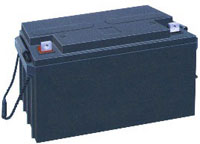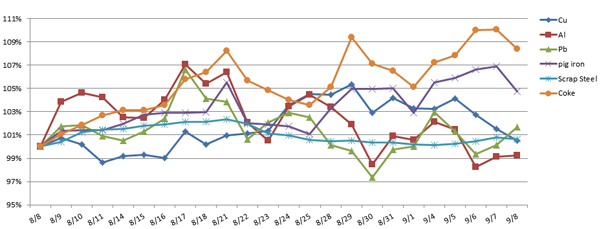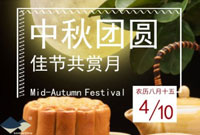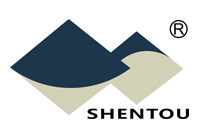CHINA AUTOMOTIVE SUPPLIER QUALITY MANAGEMENT BRIEFING
09/05/2017
Vol. 1, No. 7, September 2017

① QUALITY CHALLENGES & SOLUTIONS WITH YOUR SUPPLIERS IN CHINA
 For the automotive OEM and aftermarket manufacturers, there are various quality management system (QMS) certification requirements to satisfy overseas customers in different markets. Other than the ISO/TS16949:2009 (now IATF16949:2016), some international customers ask for such certifications as the American QA9000, the German VDA, the French EAQF or the Italian AVSQ.
For the automotive OEM and aftermarket manufacturers, there are various quality management system (QMS) certification requirements to satisfy overseas customers in different markets. Other than the ISO/TS16949:2009 (now IATF16949:2016), some international customers ask for such certifications as the American QA9000, the German VDA, the French EAQF or the Italian AVSQ.
While most international buyers prefer their Chinese suppliers to have the IATF (formerly ISO/TS) 16949 certifications for their QMS as the top qualification criteria, regardless they are for OE or aftermarket, a fact not widely known among the buyers is that according to ISO/TS16949 and IATF16949, factories manufacturing aftermarket parts only are NOT eligible to be certified to the automotive QMS standards.
The ISO/TS16949 is a technical standard specifically for the global automobile industry. It has been developed on the bases of ISO9001, with specifications for the OEM industry. As such, it is applicable to the parts and components suppliers within the supply chain of the OEMs.
IATF16949:2016 has become effective since October 1st, 2016, to replace the ISO/TS16949. Starting from October 1st, 2017, no organizations can be certified to ISO/TS16949:2009, and all ISO/TS16949 audits (initial, surveillance, recertification or transit audits) will be stopped. Certificates to ISO/TS 16949:2009 will no longer be valid after September 14th, 2018.
In short, both the ISO/TS16949 and IATF16949 are for suppliers within the OEMs’ supply chains. Consequently manufacturers for aftermarket only are simply not eligible.
In reality, however, some aftermarket suppliers have managed to become ISO/TS16949 certified by making bogus claims about their supplies to OEM, despite the fact that they are actually not and quite often they are not truly qualified either.
International buyers should be particularly aware of such suppliers, as typically they are doing this mostly for marketing purpose and without serious commitment to quality. It is important to bear in mind that those with nice certifications are not necessarily qualified as claimed, and those without proper certifications are not necessarily un-qualified.
By Felix SS YUAN
② CRITICAL FAILURE MODES / QUALITY CONTROL POINTS IN FOCUS

Vehicle Battery
Vehicle batteries can be divided into dry charge batteries and maintenance-free batteries.
Dry charge batteries can hold the amount of electricity within two years under a completely dry state. Add electrolyte or distilled water when used. Run for 20 to 30 minutes after the electrolyte is added. The negative electrode has a high storage capacity and can instantly discharge with high current.
Maintenance-free batteries have very low consumption of the electrolyte. No distilled water needs to be added in the life cycle. It has good resistance to shock and high temperature. Small in size with low self-discharge, its life span is 2 times the ordinary batteries.
Primary failure modes:
●Fail to start the engine;
●Hard to start and the eye indicator appears black or white (the normal state is generally green);
●The light dims, the honking becomes hoarse, or the voltage drops too fast when idling;
●Leakage.
Key quality control of the finished products:
●Good appearance, with no cracks in the shell and no leakage;
●No obvious oxidation on the battery terminal posts;
●The measured voltage is within the rated range. For dry batteries, test should be undertaken 20 to 30 minutes after the electrolyte is added.
●Power shortage is normal after a long storage time. Test after recharging.
By Carlos WJ LIN
③ KEY CONCEPTS & PRACTICES IN SUPPLIER QUALITY MANAGEMENT
 International buyers are quite often faced with the challenge of how to handle the color boxes for their purchase in China. Since there is usually a minimum setup cost for each run at printing shops, when the quantities for each box type are small, the average box cost could account for a significant part of your products’ selling prices.
International buyers are quite often faced with the challenge of how to handle the color boxes for their purchase in China. Since there is usually a minimum setup cost for each run at printing shops, when the quantities for each box type are small, the average box cost could account for a significant part of your products’ selling prices.
Try to reduce the different box types for your products. Use one type for as many products as possible, with perhaps appropriate fillings to hold the products inside.
Plan the box production with your estimated annual demand, so the quantities for each type could be increased to sufficiently lower the average cost. Get assistance from your partners/suppliers in China to help manage the stock boxes for you.
For some high-volume and fast running product groups, box-producers in the groups’ supplier-concentrated areas are sometimes able to supply the boxes at significantly lower costs, even for small quantities. Your suppliers would be eager to help you to find a smart solution.
If your procurement in China involves many different box types for diversified product groups from multiple suppliers, it is a good idea to designate one box-producer in an appropriate location, with all your boxes made by this producer who’d also help ship the boxes per your instructions. This strategy has the added benefit of making sure the color and paper qualities of the different boxes are kept as consistent as possible.
④ CHINA INDUSTRY & MARKET UPDATE
Cost of raw materials:

Exchange rates:
![]() USD/RMB: 1: 6.58
USD/RMB: 1: 6.58
![]() EUR/RMB: 1:7.83
EUR/RMB: 1:7.83
![]() RUB/RMB: 1:0.11
RUB/RMB: 1:0.11
September 2017
The above information is for reference only
⑤ IT HELPS TO KNOW...
 The National Day of the People’s Republic of China is October 1st, to celebrate the founding of China on that day in 1949. The National Day is an important public holiday observed throughout mainland China, Hong Kong, and Macau.
The National Day of the People’s Republic of China is October 1st, to celebrate the founding of China on that day in 1949. The National Day is an important public holiday observed throughout mainland China, Hong Kong, and Macau.
The National Day is usually the start of a 7-day holiday week, during which almost all offices and factories in China will be closed.
The Mid-Autumn Festival, also known as the Moon Festival, is also one of the most important traditional holidays in China. A day for harvest celebration and family reunion, it falls on the 15th day of the eighth month of the Chinese calendar, which is usually either in late September or early October.
Traditionally, on Mid-Autumn Day, Chinese family members and friends will get together to admire the bright mid-autumn moon and eat moon cakes together.
The Mid-Autumn Festival day is a legal holiday in China, and in 2017 it is the 4th of October. Therefore it becomes part of an extended National Day holiday period from Sunday October 1st to Sunday October 8th.
SHENTOU SUPPLY CHAIN MANAGEMENT CO. LTD. is a Shenzhen, China, based company serving international automotive clients in the implementation of their China strategies and programs. CHINA AUTOMOTIVE SUPPLIER QUALITY MANAGEMENT BRIEFING is a bi-monthly newsletter published by Shentou to address the specific and unique quality challenges and concerns international automotive companies face with suppliers in China. Comments are welcome at qms@shentou.com. Click here to subscribe.

